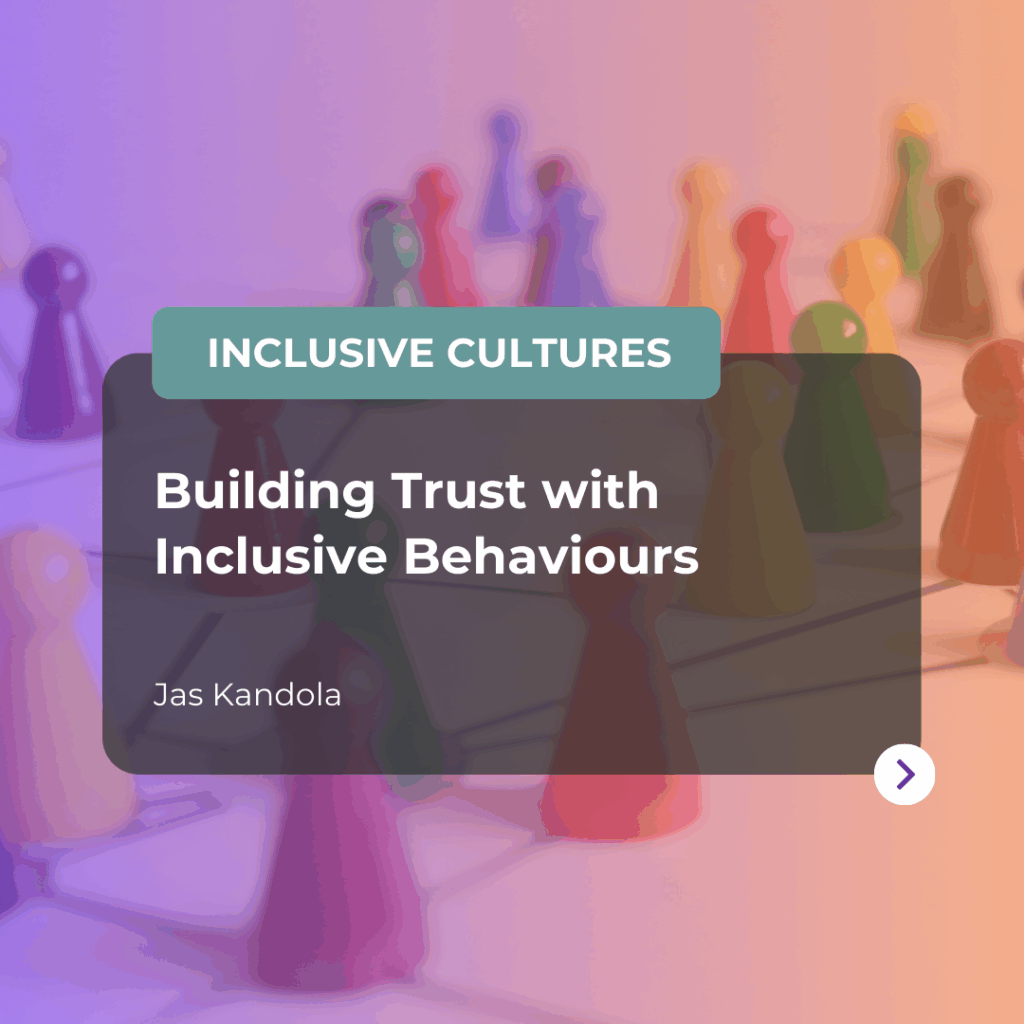In today’s globalised business environment, workplaces are more diverse than ever before. Employees bring a rich tapestry of cultural perspectives, values, and communication styles to the workplace, offering the potential for increased creativity and innovation. Yet, many organisations continue to expect their workforce to conform to a predefined cultural mould. This approach is not only limiting but also risks alienating employees and missing out on the benefits of true inclusivity.
Instead, the responsibility should lie with organisations to adapt their communication strategies to meet the needs of their diverse teams. By doing this, businesses can foster an inclusive environment where employees feel empowered to bring their authentic selves to work. This article explores why organisations should embrace this approach, the benefits adapting your communication offers, the barriers to cross-cultural communication, and practical strategies for success.
Understanding the Importance of Cultural Adaptation in Communication
Cultural adaptation in the workplace refers to the process of adjusting one’s communication style, behaviour, and practices to effectively interact with individuals from diverse cultural backgrounds. This concept goes beyond mere translation of words; it encompasses a deep understanding and respect for the nuances, values, and norms that shape different cultures.
The significance of cultural adaptation in the workplace cannot be overstated. In an era where global collaboration is the norm rather than the exception, the ability to communicate effectively across cultural boundaries has become a critical skill for both employers and employees. By embracing cultural adaptation, organisations can create an environment where all employees feel valued, understood, and empowered to contribute their unique strengths and perspectives.
Why Employers Should Adapt Their Communication Styles
It is crucial for employers to take the lead in adapting their communication styles rather than expecting employees to change their cultural practices. This approach is rooted in several key principles:
- Respect for diversity: By adapting communication styles, employers demonstrate respect for the diverse backgrounds of their employees, fostering a culture of inclusion and belonging.
- Empowerment of employees: When employees can communicate in ways that feel natural to them, they are more likely to express their ideas freely and contribute meaningfully to the organisation.
- Leveraging diverse perspectives: Adapting to different communication styles allows organisations to tap into the full range of insights and ideas that a diverse workforce can offer.
- Legal compliance: In many jurisdictions, accommodating diverse cultural practices is not just good practice but a legal requirement under anti-discrimination laws.
Common Barriers to Cross-Cultural Communication
Despite the best intentions, several barriers can impede effective cross-cultural communication in the workplace. Recognising these obstacles is the first step toward overcoming them.
Language Differences
Varying levels of language proficiency can lead to misunderstandings in several ways:
- Misinterpretation of technical terms or industry jargon
- Difficulty expressing complex ideas or nuanced emotions
- Misunderstandings due to accents or regional dialects
Nonverbal Communication Misunderstandings
Gestures, facial expressions, and personal space norms can vary significantly across cultures.
- A gesture considered friendly in one culture may be offensive in another
- Eye contact norms differ widely, with some cultures valuing direct eye contact and others finding it disrespectful
- Acceptable physical distance during conversations can vary, leading to discomfort or misinterpretation of intentions. While a hug and kiss on the cheek is a common professional greeting in France, the same behaviour in Britain would be considered unprofessional
Stereotypes and Biases
Preconceived notions about certain cultures can hinder open communication:
- Assumptions about an individual’s abilities or work ethic based on their cultural background
- Unconscious biases affecting how messages are interpreted or delivered
- Stereotypes influencing expectations of behaviour or communication style
For example, in a multinational project, a British employee known for polite communication phrases a critique subtly: “This might need a bit more work.” An American colleague interprets this as approval due to a stereotype that British people avoid confrontation, leading to a misunderstanding about the need for revisions.
Different Communication Styles
Cultures differ in their directness of communication, levels of formality, and approaches to feedback. Some cultures favour direct, explicit communication, while others rely heavily on indirect communication and non-verbal cues. For example, in more hierarchical societies, employees might be hesitant to offer constructive criticism directly to a superior, particularly in a group setting. Similarly, in some cultures, it is seen as very important not to “lose face,” so one has to be careful of openly expressing disagreement or challenge.
Cultural Norms and Values
Underlying cultural values and beliefs significantly influence communication. Differences in concepts like time and punctuality, individualism vs. collectivism, and the importance of hierarchy can lead to misinterpretations and conflict. For example, a manager who is inclusive of their team’s opinions might be seen as indecisive and weak in a culture where managers are expected to make decisions independently.
Strategies for Adapting Your Communication Style
To better align with diverse cultural backgrounds, organisations and individuals can implement several strategies.
Practice Active Listening
Active listening involves more than simply hearing words; it requires attentively processing both verbal and non-verbal cues.
For instance, a project manager in a global team noticed that one team member from Japan often hesitated before responding during meetings. By actively listening and waiting patiently instead of interrupting, the manager realised that the pause was a cultural norm reflecting thoughtfulness, not uncertainty. Asking clarifying questions – such as, “Do you see any challenges with this approach?” – helped ensure understanding and made the team member feel valued.
Be Aware of Non-Verbal Cues
Gestures, posture, eye contact, and personal space all carry meanings that can either enhance or hinder interactions. Recognise that body language and gestures may have different meanings across cultures.
For example, a British executive visiting a partner company in Saudi Arabia noticed that colleagues stood closer during conversations than he was accustomed to. Understanding that this closeness indicated engagement rather than intrusion, the executive adjusted his behaviour to build rapport.
Observing others is key. A Canadian manager working in India learned that head nodding could mean agreement or simply acknowledgment. By asking for verbal confirmation when decisions were discussed, the manager avoided misinterpretation.
Use Simple and Clear Language
Clear language bridges gaps in understanding, especially when dealing with non-native speakers. Avoiding idioms and jargon ensures your message is accessible to everyone.
For instance, when discussing project deadlines, an American leader avoided saying, “We’ll touch base next week,” and instead said, “Let’s meet next Monday to review progress.” When explaining complex concepts, a Polish software engineer used analogies relevant to their German colleague’s background, such as comparing a software framework to a well-organised city transport system.
Being willing to rephrase ideas or explain them differently demonstrates flexibility and improves comprehension.
Seek Feedback and Clarification
Creating a feedback-friendly environment fosters open dialogue and mutual understanding. Be open about your blind spots; when entering a new culture, be open with your team about areas where you might need help. Ask for feedback on your communication style. For example, a Dutch supervisor working with a multicultural team in Singapore openly acknowledged their unfamiliarity with local customs, asking the team to point out areas where their communication style might need adjustment. This humility set the stage for honest exchanges.
Avoid Assumptions and Stereotypes
Treating individuals as unique rather than as representatives of their culture is also important. A German engineer collaborating with an Indian team realised he had assumed that hierarchical deference in Indian culture would prevent team members from challenging ideas. By encouraging open discussion and actively soliciting feedback, he discovered innovative contributions from his colleagues.
Be Respectful and Open-minded
Showing respect and a willingness to learn about others’ cultures builds trust and strengthens relationships. A French manager in Brazil, for example, encountered an employee who preferred longer greetings and small talk before meetings. By embracing this approach, the manager built a stronger rapport with the team.
Show genuine interest in learning about different cultures and perspectives:
- Ask respectful questions about cultural practices and norms
- Acknowledge and appreciate cultural differences
- Demonstrate willingness to adapt your communication style
- Put yourself in the other person’s shoes and try to understand their perspective. For example, if someone is struggling to understand slang, be patient and help them
- Recognise that cultural differences are natural and expect misunderstandings to occur
Non-Verbal Communication Across Cultures
Non-verbal cues play a significant role in cross-cultural interactions, often conveying more meaning than words alone.
The Role of Non-Verbal Communication
Non-verbal communication includes:
- Facial expressions
- Gestures and body language
- Personal space and touch
- Tone of voice and paralanguage
- Dress and appearance
Cultural Variations in Non-Verbal Cues
Examples of how non-verbal cues can vary across cultures include:
- Personal space preferences: Some cultures prefer closer physical proximity during conversations, while others maintain more distance
- Acceptable levels of physical contact: Handshakes, hugs, or kisses as greetings vary widely in appropriateness across cultures. For example, Wal-Mart’s attempt to introduce friendly greeters at store entrances in Germany backfired, as Germans found this practice unsettling and overly familiar.
- Interpretations of eye contact or facial expressions: Smiling, for instance, can convey happiness in some cultures but may be seen as a sign of weakness or insincerity in others. In some cultures, direct eye contact is seen as respectful, while in others, it may be considered rude or aggressive. For instance, an American manager maintaining strong eye contact with Japanese employees could make them uncomfortable.
- Hand gestures: The “thumbs up” gesture is positive in many Western cultures but can be offensive in some Middle Eastern countries
Tips for Navigating Non-Verbal Communication
To be mindful of non-verbal differences:
- Research common non-verbal cues in the cultures you interact with
- Observe and respectfully mirror the non-verbal behaviours of your colleagues when appropriate
- Be aware of your non-verbal habits and their potential interpretations
- When in doubt, ask for clarification on the meaning of unfamiliar non-verbal cues
Building a Culture of Inclusive Communication
Fostering an inclusive communication culture is essential for a diverse workplace. It requires a concerted effort from leadership and employees at all levels of the organisation.
Importance of Inclusive Communication
An inclusive communication culture:
- Ensures all employees feel valued and heard
- Promotes the free exchange of ideas and perspectives
- Enhances problem-solving and decision-making processes
- Contributes to a positive and productive work environment
Strategies for Creating an Inclusive Environment
To create and maintain an inclusive communication environment:
- Offer cultural sensitivity training: Provide regular workshops and training sessions on cross-cultural communication and diversity awareness.
- Encourage open dialogue and feedback: Encourage open dialogue about cultural differences and create safe spaces for employees to share their perspectives and experiences. Foster a culture of continuous feedback, allowing employees to provide input on communication practices and suggest improvements.
- Celebrate cultural diversity: Organise events and initiatives that showcase and appreciate different cultural traditions and perspectives.
- Implement inclusive policies and practices: Develop guidelines that respect various cultural norms, such as flexible holiday policies or diverse food options in the cafeteria.
- Lead by example: Leaders must champion inclusive communication practices, setting clear expectations and modelling desired behaviours. They need to actively promote diversity and create a workplace culture where all employees feel safe, respected, and valued.
- Create diverse teams: Intentionally form teams with members from various cultural backgrounds to foster cross-cultural collaboration.
- Provide language support: Offer language classes or translation services to support non-native speakers.
- Establish mentorship programs: Pair employees from different cultural backgrounds to promote mutual learning and understanding.
Examples of Effective Cross-Cultural Communication
Several companies have successfully adapted their communication styles to accommodate diverse cultural backgrounds, reaping significant benefits as a result.
IBM: Culture Wizard Program
IBM implemented a “Culture Wizard” program to help employees navigate cultural differences in global teams:
- The program provides country-specific information and cultural training
- Employees can access online tools to compare cultural dimensions across countries
- The initiative has led to improved collaboration and project outcomes in international teams
Coca-Cola: Global Diversity and Inclusion Training
Coca-Cola developed a comprehensive global diversity and inclusion training program:
- The program focuses on cross-cultural communication skills and cultural awareness
- It includes modules on unconscious bias and inclusive leadership
- The company has reported increased employee engagement and innovation as a result
Google: Employee Resource Groups
Google created employee resource groups to promote cultural understanding and inclusive communication practices:
- These groups provide a platform for employees to share their cultural experiences and perspectives
- They organise cultural events and educational initiatives
- The initiative has contributed to a more inclusive work environment and improved employee satisfaction
The Benefits of Adapting Your Communication Style
Adapting communication styles to accommodate diverse cultural backgrounds offers numerous advantages that can significantly impact an organisation’s success and employee satisfaction.
Reduced Misunderstandings and Conflicts
Adapting communication styles helps minimise cultural misinterpretations and potential conflicts by:
- Clarifying expectations and intentions
- Reducing the likelihood of unintentional offense
- Providing a framework for addressing and resolving cultural differences
Increased Productivity and Innovation
Effective communication minimises misunderstandings and streamlines workflow, leading to increased productivity and efficiency. A diverse workforce that communicates well can lead to:
- More creative problem-solving approaches
- A broader range of innovative ideas
- Improved decision-making processes that consider multiple viewpoints
Improved Employee Morale and Engagement
Building rapport is essential for successful collaboration. Adapting communication to cultural preferences fosters stronger relationships built on respect and understanding. Adapting communications to individual needs makes them feel ‘seen’ and valued for who they are. When employees feel that their cultural background is respected and valued, it leads to:
- Higher job satisfaction
- Increased motivation to contribute to the organisation’s goals
- A stronger sense of belonging and loyalty to the company
Enhanced Teamwork and Collaboration
Effective cross-cultural communication facilitates better cooperation among team members from different backgrounds by:
- Breaking down cultural barriers that might hinder collaboration
- Fostering a more open and inclusive team dynamic
- Encouraging the sharing of diverse perspectives and ideas
Better Employee Retention and Reduced Turnover
Employees who feel valued and understood are more likely to:
- Stay with the company long-term
- Recommend the organisation to other talented professionals
- Contribute positively to the company’s reputation as an employer of choice
The skill of adapting to different cultures is not just a nice to have
At Pearn Kandola, we define Inclusion as: “incorporating differences without eliminating them and promoting a culture where people flourish individually and unite as a high performing team.”
This involves seeing difference as an asset, not as something to be navigated or ignored. We can only unlock the full value from having employees with different backgrounds and cultural perspectives by supporting difference, not eliminating it.
Adapting communication styles to accommodate diverse cultural backgrounds is not just a nice-to-have skill – it’s a critical component of business success in today’s globalised world. By prioritising cultural adaptation in communication, organisations can create a more inclusive, productive, and harmonious work environment that benefits both employees and the company as a whole. The journey towards effective cross-cultural communication is ongoing and requires continuous learning and adaptation, but the benefits far outweigh the challenges. As we move forward in an ever-more diverse business landscape, let us remember that the strength of an organisation lies in its ability to harness the full potential of its diverse workforce.
Next Steps
At Pearn Kandola, we understand that organisational success stems from creating a culture where diverse talent can thrive.
With our expertise in cultural intelligence and inclusive leadership, we help organisations cultivate cultures of belonging and respect, driving innovation, collaboration, and performance.
If you’re interested in learning more about how we can support your organisation, please contact us at info@pearnkandola.com.






